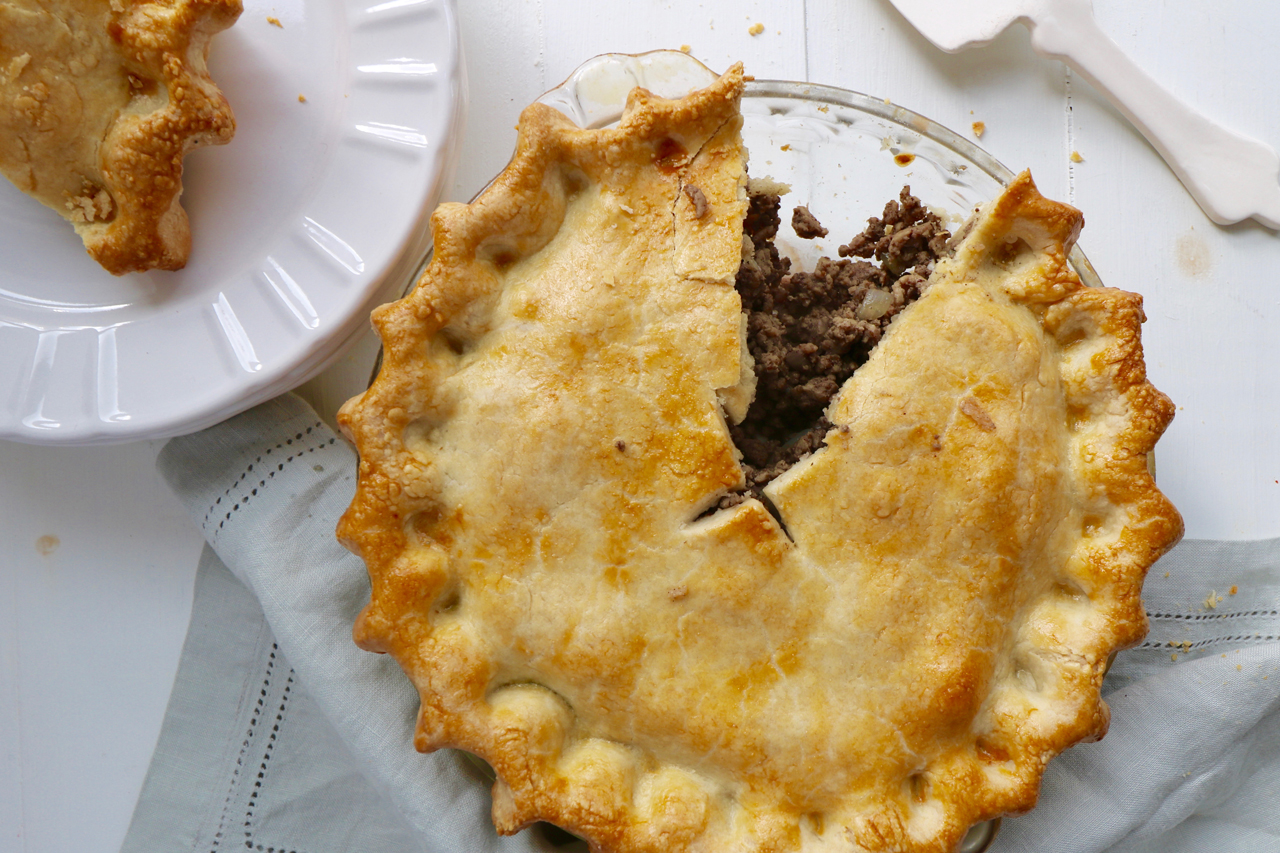
No visit to Québec would be complete without indulging in a savoury slice of tourtière, the famed double-crusted meat pie with a flaky, buttery crust. But did you know this delicious dish has deep roots in an old Christmas tradition dating back centuries?
“It’s the type of food you will find only in the winter season, and nowadays, close to Christmas,” says Ricardo Larrivée, chef and host of show Ricardo and Friends. “You will do it maybe once a year, a bit like going to the sugar shack. It’s a tradition.”
Tourtière can be traced back to the 1600s, when Québécois settlers attended midnight mass on Christmas Eve and celebrated afterwards with réveillon, a late-night festive feast fit for a king. A tradition borrowed from Europe, the table would be overflowing with seafood, meat dishes, wine and luxurious sweets, consumed late into the evening. Tourtière was always on the table, and in 17-century Québec, the pie was traditionally served in a cast-iron cauldron and stuffed with cubed meats, often wild game (rabbit, pheasant, or moose).

Four centuries later, the pie remains a staple dish both at réveillon and in Québécois households. Although recipes vary, the basic ingredients are the same: a buttery pastry shell is filled with spiced meats and vegetables, and then baked until the crust is golden and flaky.
“It’s part of our heritage and it’s nice to keep it alive,” says Ricardo.
Some food historians believe tourtière may be related to a 5th-century pie called “La Patina,” made in a bronze pot with layers of pastry and a hole in the crust’s centre. However, in Québec, the earliest recipes for tourtière appeared in La cuisinière canadienne (1840), likely the first French-language cookbook published in Canada. And there are all kinds of theories about the history behind the name, “tourtière.”
“A ‘tourte’ was the name of a bird like a pigeon, and they were making pie with these types of birds,” says Ricardo. “So they called it ‘tourtière.’ Another other explanation is that it got the name from the dish — a tourtière is also the [pie pan] in which this meat pie was cooked and baked.”
But what makes an “authentic” Québécois tourtière? It’s a hotly debated topic within the culinary community, with no clear-cut answers or consensus.
Along Canada’s coasts, it’s not uncommon to find meat pie made with salmon or trout. In Montreal, it’s all about ground pork, beef, or veal baked into a delicate shell, while others in Saguenay-Lac St. Jean lean towards making giant pies stuffed with game meats — enough to feed a family of twenty.
“In Gaspésie, we are making layers of dough, under which we will have either game or meat, and even sometimes potatoes,” says Ricardo. “The top is crusty and golden brown, where the inside pieces of dough will be soft as if you were having a dumpling.”
Virtually every Québécois family has a recipe. But regardless of these regional renditions, four spices are almost always included — cinnamon, clove, allspice and nutmeg — which distinguish this meat pie from the others.
The “pie love” knows no boundaries in Canada, with the recipe being constantly replicated and adapted. Some renegade chefs are getting creative in the kitchen, making funky renditions perfect for parties and pairing with condiments like Dijon mustard, chili sauce, chutney, red pepper jelly or pomegranate jelly. Oh mon dieu!
But despite these playful renditions, Ricardo says that tourtière is a relatively rare dish to find on the menus in Québec and across Canada.
“The reason why this particular dish won’t be in the hot spot is pretty simple: it takes a lot of time and it’s pretty expensive,” says Ricardo. “There are six to eight pounds of meat in that. It’s something unique — it was a country staple food. Rarely will a restaurant do it.”
Since it’s slim restaurant pickings, why not try mastering the classic Québécois tourtière at home? Start with this classic tourtière by Anna Olson, packed full of savoury meats and spices, or for a Montreal-style recipe, try “Chuck’s Tourtière,” a crust teeming with ground pork and veal seasoned in onions, cloves, and spices.
Martin Picard has long been a tourtière champion, making a mean version at Montreal’s Au Pied de Cochon.
As for Ricardo, he often makes his pie with hand-chopped pork, instead of minced meat spiced with nutmeg and clove. But no matter which recipe you choose, Ricardo says to expect one thing every time.
“Be prepared not to sleep for a whole night,” he says. “Because you have to wake up – four, five, six times – to add some broth into the hole on top of your dough. It’s good when it’s moist! It will take at least 8 hours to bake slowly. It’s a heavy dish, probably 20 lbs!”
